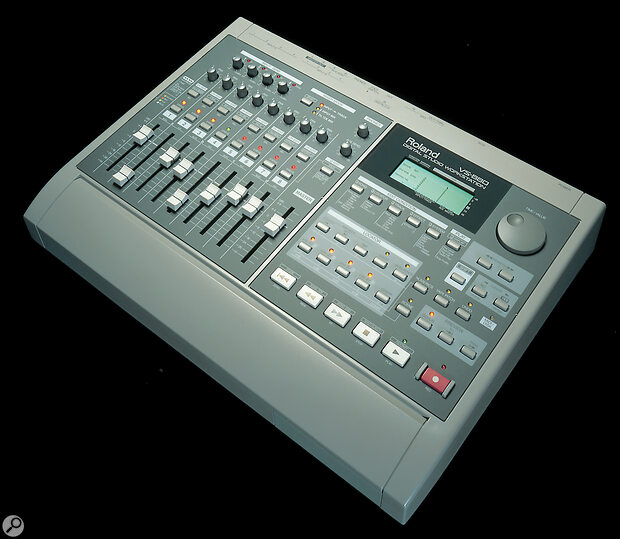Have Fostex really stolen Roland's thunder with their digital multitrack? Mystic Paul White thinks Roland might have a trick up their sleeve...
No sooner has the Fostex DMT8 landed in the shops, than Roland set about denying the imminent arrival of their own digital multitrack workstation at an identical price. Now that Tascam look set to announce their own digital version of the Portastudio at the forthcoming NAMM show, the future is looking increasingly digital for the home recordist.
Assuming for the moment that a product called the VS880 does exist, it is (like the Fostex system) undoubtedly based around hard disk technology, and can play back up to eight tracks at once. Sophisticated cut, copy and paste editing routines are possible and, like more expensive hard disk recording systems, you can record virtual tracks, in this case up to eight per 'real' track. You can then store these 'alternate takes' before deciding which ones to use in the mix.
Everything is recorded at the industry‑standard, 44.1kHz sampling rate, with the option to sample at 48kHz or 32kHz. The sampling format is 16‑bit, with eight times oversampling. You can back up your recorded work to DAT in just 1.5 times the actual recording time, and with an internal 540Mb IDE drive fitted, the maximum recording time is said to be around 35.6 minutes. There is no drive fitted as standard; dealers will be able to choose the drive type they will want, and Roland UK will be able to supply units with a 1Gb drive if required.
<!‑‑image‑>The stated recording time leads me to believe that some form of data compression is being used, and checking with Roland, it appears that if such a product were ever to exist, there would be a choice of four (Roland proprietary) compression modes. These might well comprise Master (no compression), Multitrack 1 (2:1), Multitrack 2 (2.5:1) and Live (3:1). Obviously, the maximum recording time pertains only to the maximum 3:1 compression — Master mode will provide only one third of this time. However, a SCSI port allows external SCSI hard and removable drives to be added, which is a clear advantage for those working on longer projects or wishing to back up to Iomega Zip drives or similar.
Unlike the Fostex DMT8, which uses a straightforward analogue mixer section, the VS880 features an automated digital mixer with a slot to accept an optional effects processor card for another £340.
The mixer section has an assignable control system and comprises 14 input channels, digital two‑ or three‑band EQ (depending on how many channels of EQ you need), which can be routed to eight recording busses as well as to the stereo mix buss. There are four analogue inputs and two S/PDIF digital ins, as well as a digital output for direct mastering to DAT. All the fader movements, pan, EQ and other key mixer parameters may be automated via MIDI using an external sequencer. The optional, plug‑in effects card provides processing power equivalent to two Boss SE70s plus some RSS capability, and also uses the COSM modelling system (which first appeared in last year's Roland VG8 guitar synth). Each mixer channel has two internal effects sends.
The overall package is designed to look and feel as much as possible like a conventional cassette multitrack workstation, and this extends to the use of tape‑type transport controls. Because of the nature of the assignable mixer section, however, some departures from the norm are evident in this area.
When it comes to editing your work, the VS880 provides the usual non‑destructive copy, cut and paste functions plus exchange, insert, erase and audio scrubbing. That's about the size of it for now, but we'll be bringing you an in‑depth review of the VS880 just as soon as its existence is officially confirmed.

